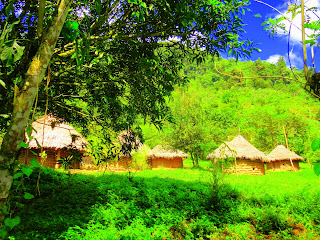Whilst researching for my South America trip 12 months ago I stumbled across a photograph of an incredible church built over a gorge surrounded by mountains. I instantly put it on my ''To Do List'' but was disappointed to find that there was no further information about this spectacular building, just a photograph labelled Colombia. No name. No directions. No hint as to where in Colombia it may be. I was determined to find it.
As soon as I arrived in Colombia I started to ask around about this mysterious Colombian church. Other backpackers thought I was crazy and many locals were bewildered by my questions. I started to wonder if it even existed. Eventually the name of the church was revealed as Las Lajas, as I discovered it on a random map of Colombia in a tour operators office. I then slowly started piecing information together and gradually gathered enough information from the locals to set off on my adventure in search of my mysterious church.
It was to be a bit of a mission which required me going very much off the usual backpacker trail but I was determined to find it before I left Colombia. After leaving Salento, I made my way back to Aremenia where I transferred onto an overnight bus to Pasto. 18 hours later I finally arrived in the non-descript, run down city of Pasto. I stayed in Pasto overnight, prepared to wake up early the following morning to set off again in my final part of the journey. I made my way to the bus station, hopped on a minibus to Ipiales, a small town just 7 kilometres from Equador and from there I got a collectivo to take me to the closest village to Santuario de Las Lajas. I arrived at the little village perched on top of a hill that was hiding Las Lajas, very excited about finally seeing the magnificent building that I had been searching for since last year. As I walked down the winding hill, following the river I finally reached my destination which brought a huge smile to my face.
I was completely overwhelmed with how incredible Las Lajas was, and was amazed that I had finally reached it. Set amongst rolling green hills and waterfalls, Las Lajas is truly magnificent. It is surrounded by winding paths and bridges which meant I free to explore every angle of this interesting piece of architecture.
The interior of the church was surprisingly small but still very beautiful with brightly coloured stain-glass windows and gold stars scattered across the ceiling.
This was definitely the most perfect way to finish my Colombian adventure, and I feel I can leave Colombia as a very happy explorer.


















































